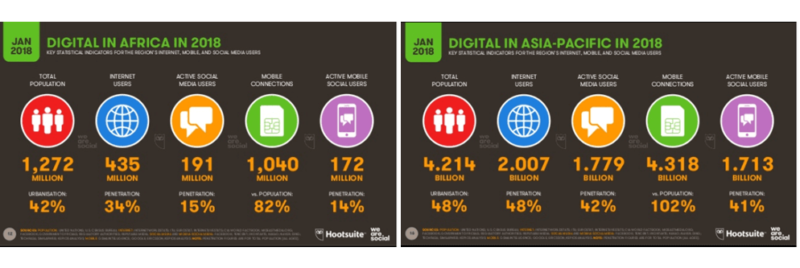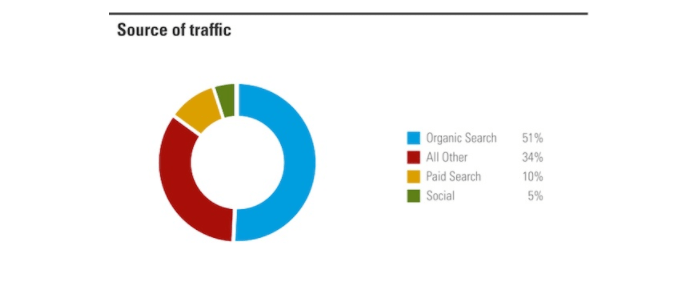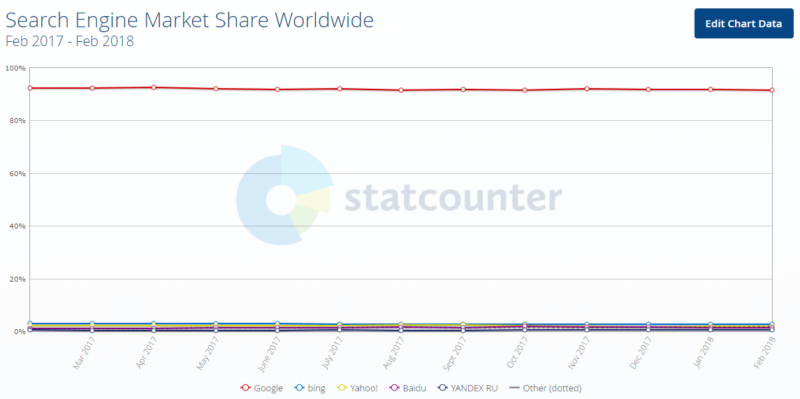International SEO: How to build a global footprint
Being successful on the international stage requires more than practicing basic SEO, says Contributor Jim Yu. You must make meaningful connections and adapt to local-level insights to make your mark.
International search engine optimization (SEO) remains one of the foremost ways for a brand to establish their global digital footprint.
It is a hugely challenging endeavor that rewards those who find the right blend of global best practices and local-level insights.
Global trends like the adoption of a mobile-first approach should shape international SEO strategy, but this must be imbued with the usage trends that make each territory distinct.
If businesses can incorporate local insights and tailor their approach to the technical, linguistic and cultural nuances each new territory inevitably brings, SEO can be a scalable and highly profitable marketing channel.
This already sizeable opportunity continues to grow as the global internet population increases. There are now over 4 billion internet users worldwide, which is still only 53 percent of the total population.
While Europe’s internet penetration sits at 80 percent, the Asia-Pacific region remains at under 50 percent, and Africa is as low as 34 percent.
The trend is marked: Every year, the global digital population grows by hundreds of millions of people. As more people get online, they tend to use search engines to navigate the trillions of universal resource locators (URLs) on the web. According to a recent study by BrightEdge, 51 percent of that search traffic goes to organic search, too.
Statcounter reports that Google has a 92 percent share of all searches worldwide, but it faces serious competition for that position in important markets like China, Korea and Russia. As such, we should dig deeper before assuming Google is the go-to search engine globally.
Applying the same SEO strategy to all markets — even if Google is the main player in each of these countries — will always deliver suboptimal results. The competitive landscape changes across territories, as do audience behavior and preferences. For each local area, we need to know how search engines function, but we also need to understand the people who use them.
In short, international SEO is difficult to master.
New technology trends
This is increasingly the case as new technological trends take hold, such as the personalization of search results and the rise of quick answers.
The shift to mobile-first is adding another layer of complexity, as it brings with it the opportunity to integrate an ecosystem of apps with the core search product. Combined with the requirement for a different approach to consumer communications in each market, the picture becomes more and more fragmented. Everything from user experience (UX) to keyword usage and link earning may need to be adapted to make the most of the international SEO opportunity.
Simultaneously, consumer expectations are growing
Consumers expect to receive consistent messaging from brands across all touch points, with SEO playing a fundamental part of this multichannel mix. In moments when we want to know, go, buy or do, we typically head to a search engine. This tension between a cohesive global strategy and a fragmented local reality may seem insoluble, but that is not necessarily the case.
Any marketer who has implemented a global strategy will be familiar with the need to take both a panoramic view of the international market and also pinpoint very specific trends within individual markets.
This applies to our core markets and also to expansion markets. We know that desktop and mobile search results are markedly different, and we also know our target audience is never homogeneous.
Baidu wins
The SEO industry has grown in sophistication to the extent that these insights are central to any organic search strategy, whether domestic or international. As such, we have a flexible framework that can be applied to each new market.
If we take a vital international market like China, we can see that Baidu is the most popular search engine by far. At present, Baidu has almost 75 percent of the market; however, it has faced some recent challenges from nascent platforms and new ways of discovering content through mobile apps.
That means we need to understand how this search engine prioritizes results for specific queries, but this alone will be insufficient. It is important to know how consumers use technology in China because it is mobile usage that is increasing significantly.
Despite reporting just a 12 percent year-on-year uplift in the number of mobile users, overall mobile usage was up by 30 percent compared to the previous year.
Apps like WeChat are also hugely popular ways of finding information in China, so we must be sure our content can be surfaced through this medium, too.
Culture has an impact beyond just the translation of messages into the local language, and many brands find that in China, a new approach to user experience is required.
The screen shot below shows the home page of HSBC USA at the top and that of HSBC China below:
We see some notable differences, none of which are accidental. The American version is colorful and appeals to the desire of the individual to be empowered to make choices.
The Chinese home page employs a different layout and colors, with localized content relating to the Chinese New Year and the new roads set to open important trade routes for the country. Calls to action are less obvious than on the American home page, and imagery relates to the family rather than products.
Meaningful connections
This may not seem like the arena of the SEO specialist, but all of this matters if we want to create meaningful connections on a global scale.
User engagement signals are more important than ever for SEO performance. These are the insights an international SEO strategy needs to take on board if it is to be truly successful.
This is just one example, but the important thing to take away is the approach to scaling an SEO strategy. There are a few questions we should always ask when taking our SEO global:
- How do search engines crawl, index and rank content in each different country?
- How do search results pages differ across devices in each territory?
- Do my core keywords translate into the local language?
- What are the linguistic nuances that I need to incorporate into my URLs, titles and description?
- Do I need to adapt my UX to engage with local consumers?
- How do people typically find information online in this country?
While International SEO is a complex undertaking that requires a combination of skills, there are some valuable tips that can help us overcome these obstacles.
Translation
It should go without saying that simply using an online translation tool is not going to cut it when it comes to international SEO.
First, there is no guarantee the translation will be accurate or that it will account for any important colloquialisms.
Second, finding the translation for a phrase does not mean it is the most search-for variation.
And third, just because you rank well for a query in one country, it does not mean you will have the same success by proxy in another location. It is essential to localize content based on both search trends and consumer insights in order to rank for the right queries and to convert customers once they land on your site.
Here are some tips to overcome the translation challenge:
- Conduct keyword research starting with local demand, rather than your initial list of keywords from another country.
- Engage with native speakers of the language who can provide invaluable, qualitative feedback on your keyword list.
- Research the competitive landscape to identify the categories where you can make an impact.
- Apply a consistent methodology across all countries to develop smart content that cuts through the noise.
- Account for trends like voice search by researching how customers use search, then adapt your content to take advantage.
The nature of search is changing
This medium is developing into a richer, more visual platform for brands to engage with their audiences, driven by machine learning to deliver more accurate results. We see this in the rise of universal search, quick answers and personalization. This creates a significant opportunity to connect in a much deeper way with audiences, but it also requires more attention to make the most of this in international markets.
Here are more tips to help you connect with an audience:
- Use an enterprise SEO and content platform to identify the trends that shape results in each country.
- Take this research and use it to pinpoint opportunities to rank, whether through text, video or image-based content.
- Identify search trends across devices to ensure that your content is optimized for the right kind of user.
- Even in markets where Google dominates, marketers should still be prepared to adapt their strategy to fit the local nuances of search results.
Conclusion
International SEO is much more than just translation and technical SEO basics. When done right, it goes beyond the core SEO metrics we typically monitor and helps brands establish a global footprint.
New markets equate to new opportunities, but only the most sophisticated strategies and the most efficient global teams will prevail.
Contributing authors are invited to create content for Search Engine Land and are chosen for their expertise and contribution to the search community. Our contributors work under the oversight of the editorial staff and contributions are checked for quality and relevance to our readers. The opinions they express are their own.
Related stories
New on Search Engine Land







